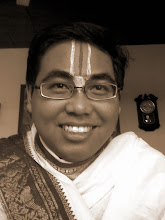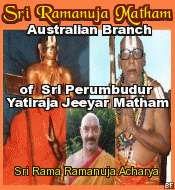Even if there are meat offerings involved in sacrificial rites, but as I observed there’s no
fleshy-bloody things in the offerings put regularly inside the shrine’s tiny room. The room believed to occupy by the Bhataras or served as their seats. According to the traditional custom of my ancestral house, we daily serve the Bhataras with offerings called
canang, pesucian, rantasan, banten alit, and some water with drinking utensils, a silver small cup and little pitcher with sprout.

 Canangs, the most common offering in Bali. Beautiful and artistically made from flower and busung. Canangs also put on more elaborate offerings as well.
Canangs, the most common offering in Bali. Beautiful and artistically made from flower and busung. Canangs also put on more elaborate offerings as well.
may be the most common offerings for all Balinese Hindus. You can find it everywhere all over the islands. In every place, every time, every occasion. A
canang was made from various small amounts ingredients. Put on a small square or round tray made from young coconut leafs (called
busung or
janur) were a little fruit (usually slices of banana), a pinch of washed and scented rice, and the most important stuff called
porosan. It is made from betel-leaf, lime, and rolled inside a small square of mango leaf. This is actually like
tambulam or
pan. On the top of these things were put another tray, also made artistically from
busungs. It is a work of art and creativity; only a photo could describe its real beauty. Atop this tray arranged flowers of various types and colors. The fragrant ones were preferred with four colors correspond to four cardinal points. White for east, red for south, yellow for west, and blue or dark color for north. At the centre of these arranged flowers was put a pinch of shredded fragrant
pandanus leafs called
kembang rampe, scented with sandalwood powder and perfume.

 Illustration of a pesucian (left). Drinking utensil serve as a glass (A) and water container with sprout (B)
Illustration of a pesucian (left). Drinking utensil serve as a glass (A) and water container with sprout (B) Pandanus, its sweet fragrance has ability to freshened the mind
Pandanus, its sweet fragrance has ability to freshened the mindNext offering is
pesucian. It is like some sort of make up stuffs put on a small square silver tray. We have two containers with fresh water and scented water in it. Also some soft black sand or ashes of burned rice cakes for tooth brushing. Little pinch of shredded hibiscus leaf (traditional shampoo for hair) and shredded fragrant pandanus leafs scented with perfume. Then we also have sandalwood powder or other natural herbal paste for body lotion and a little bit sugarcane to sweeten the mouth. Finally we put a small comb, fragrant flowers for decorating the hair, and a small mirror.
Rantasan or
tigasan is a set of cloth and some time jewelries. It is a set of “mini” traditional clothing; neatly fold on a small silver plate.
 Banten alit
Banten alit means a small offering. It consist of small cone made from rice, some vegetarian side-dishes (fried peanuts, spiced grated coconut, basil leafs, etc.), some little cakes, and flowers. Of course we also provide water for drinking by filled the silver pitcher and the cup. In some shrines believed as occupied by Bhataras with negative power, the shelter of Yaksas, Raksasas, or Bhutas also offered some liquor from fermented rice (same sort with Japanese
sake). At the place considered as occupied by ancestral spirits whose final purification ceremonies didn’t performed yet, that’s the bed-like structure in the twelve pillared hall (Bale Gede) of the house, we also offered a cup of coffee or other non alcoholic beverages. A more earthly or humanly food, not as highly symbolical and pure as offered to the higher celestial Bhataras. Then whenever we offered these stuffs, incense stick were litted or a mixture of fragrances was burned in hot charchoal. The sweet aroma from the smoke purified the atmosphere and invoked the Bhataras to take the essence of the offerings.
The offerings are of course not as pure as Vaishnavites ones, offered daily to The Supreme Lord Sriman Narayana and the Divine Entourages. But the ingredients for pure celestial Bhataras were similar with daily
Pancaratrik nitya-aradhana offerings. As we know from the previous post, for the common householder, The Supreme Being was worshiped at the main shrine with three compartments (The Kemulan, Shrine of Origin). Only the pure things should offer to this shrine. Also as a custom in Vaishnava or other Hindu-Vedic societies, no one may take any food before these offerings and its procedural rites already finished.
 A Bhuta shrine in Tulunadu, Karnataka
A Bhuta shrine in Tulunadu, Karnataka
 South Indian Bhuta mask (left) and the Balinese one (right)
South Indian Bhuta mask (left) and the Balinese one (right)
 A Bhutagudi in Karnataka and Pelinggih Tugu in Bali. Both serve the same purpose as altars for Bhutas
A Bhutagudi in Karnataka and Pelinggih Tugu in Bali. Both serve the same purpose as altars for BhutasAppreciation to other lesser subtle beings, celestial or even demonic in nature, were common in all Hindu communities. We can found it in Orissa, Tamil Nadu, Karnataka, and I think as the most similar with Bali is in
Karnataka and Kerala, where we also found altars for Bhutas, the Bhutasthana or Bhutagudi or even medium-trancelike-state rites such as
Bhutakola to communicate with these Bhutas. The same practices also common in Bali. I have already explained the real purpose to propitiate such beings besides performing our pure devotional service to The Supreme Personality of Godhead.
Of course the form of offerings were variate from place to place and from community to community. In Java or other parts of Indonesia who still practicing Hinduism or Hindu influenced traditional rites the offerings were less elaborate. Only Balinese Hindus famous for their highly artistic and elaborately made offerings.

 Elaborate and highly decorated Balinese offerings on ladies head (left) and more simple Javanese offerings (right)
Elaborate and highly decorated Balinese offerings on ladies head (left) and more simple Javanese offerings (right)




 Banten alit means a small offering. It consist of small cone made from rice, some vegetarian side-dishes (fried peanuts, spiced grated coconut, basil leafs, etc.), some little cakes, and flowers. Of course we also provide water for drinking by filled the silver pitcher and the cup. In some shrines believed as occupied by Bhataras with negative power, the shelter of Yaksas, Raksasas, or Bhutas also offered some liquor from fermented rice (same sort with Japanese sake). At the place considered as occupied by ancestral spirits whose final purification ceremonies didn’t performed yet, that’s the bed-like structure in the twelve pillared hall (Bale Gede) of the house, we also offered a cup of coffee or other non alcoholic beverages. A more earthly or humanly food, not as highly symbolical and pure as offered to the higher celestial Bhataras. Then whenever we offered these stuffs, incense stick were litted or a mixture of fragrances was burned in hot charchoal. The sweet aroma from the smoke purified the atmosphere and invoked the Bhataras to take the essence of the offerings.
Banten alit means a small offering. It consist of small cone made from rice, some vegetarian side-dishes (fried peanuts, spiced grated coconut, basil leafs, etc.), some little cakes, and flowers. Of course we also provide water for drinking by filled the silver pitcher and the cup. In some shrines believed as occupied by Bhataras with negative power, the shelter of Yaksas, Raksasas, or Bhutas also offered some liquor from fermented rice (same sort with Japanese sake). At the place considered as occupied by ancestral spirits whose final purification ceremonies didn’t performed yet, that’s the bed-like structure in the twelve pillared hall (Bale Gede) of the house, we also offered a cup of coffee or other non alcoholic beverages. A more earthly or humanly food, not as highly symbolical and pure as offered to the higher celestial Bhataras. Then whenever we offered these stuffs, incense stick were litted or a mixture of fragrances was burned in hot charchoal. The sweet aroma from the smoke purified the atmosphere and invoked the Bhataras to take the essence of the offerings.




































Hi,
ReplyDeleteI can only say SUPERB!